 |
 |
Central Tian Shan |
|
|
 |
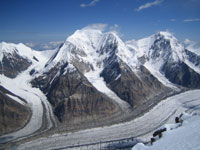
Tien-Shan (Heavenly Mountains ) spreads on the great expanses stretching over 2 500 km across Central Asia and over 1 200 km within the boundaries of the former Soviet Union.
The central and the highest part of this mountain system where almost parallel latitudal ranges of the eastern Tien-San meet, lies in China.
Some portion of the central part and the western part of Tien-Shan are situated on the territory of former Soviet republics.
Here, inside the complicated pattern of ranges and mountain tops the highest peaks of Tien-Shan rise.
They are: the peak of Pobedy ( Victory ) ( 7 439 m high ) and Khan-Tengry ( 7 010 m ).
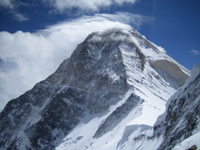
According to its orographical structure Tien-Shan is usually divided into Northern, Western, Central, Inner and Eastern (the latter is on the territory of China).
Inilchek-Too belong to the Central and Inner part,
Sary-Jaz and Tengry-Tag to the eastern part of Central Tien –Shan and the rangesKuilshu, Akshiyrak, Jetibel, Narin-Too, Borkoldoy, Atbishy and the remainin
g part of the range Terskey Alatau to the Central Tien-Shan.
Relief
Tien-Shan is one of the largest and highest mountain systems in Asia and in the world.
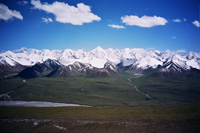
Most of the Tien-Shan ranges
are of the typical glacial-Alpine relief, though, in the Inner Tien-Shan together with the abrupt crests and sharp peaks there are flat, gently sloping broad valleys preserved on the upper levels of mountains there are vast hollows between mountains in the middle and lower level.
According to the mountaineers’ classification, the ranges of Kaindy.Those hollows and valleys are covered with grass and used as pastures. On the slopes of the ridges active erosive processes such as formation of talus, debris, stone-falls, landslides, landslips and stone avalanches are going on.
Climate
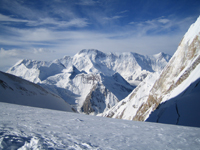 Remoteness from the oceans, considerable height above the sea level and pronouncedly rugged relief cause the formation of the sharp continental climate of the region with pronounced differences in seasonal temperatures and temperatures within one day as well as moderate precipitation and comparative dryness of the air as the high mountain ranges block the access of damp air to these areas. Remoteness from the oceans, considerable height above the sea level and pronouncedly rugged relief cause the formation of the sharp continental climate of the region with pronounced differences in seasonal temperatures and temperatures within one day as well as moderate precipitation and comparative dryness of the air as the high mountain ranges block the access of damp air to these areas.
So, the average precipitation level here is 200 – 300 mm per year, though in the Alpine zones the precip
itation level is not so low and at the height of 3 000 m precipitation equals 420 mm and at the height of 3 500 m it reaches 570 mm while at 4 000 it is 570 mm.
The dampest time of the year (85%) is in May – July, the driest time is in December – January.
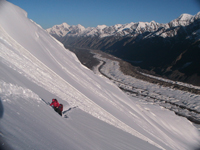
Vegetation of the mountain-step landscapes at the heights of 2 200 -3 000 m above sea level is presented mainly by turf and feather-grass. One can often see patches of rocks and talus here. Such are usually the places exposed to the sun for the most part of the year. The snow is not thick here in winter and it attracts herbivorous animals.
At the upper boundary of the mid-mountain meadows, at the height of 2 700 – 3 000 m there is usually a stripe of transitive character, bearing the features of the Alpine zones as well.
The Alpine meadows are formed at the height of 3 000 – 3 500 m above sea level, at times reaching 3 800 m’s height. They are intermingled with rocky crests, talus, moraine, ice and snow patches. Small glacial lakes add to these places special charm.
The weather in the Alpine zone is severe and unstable. Even in July and August snow storms may suddenly burst out and cover the flowering Alpine glades with snow for a short time. At the height of 2 200 – 3 200 m there are mountain forests. Taking turns with midland steps and meadows they present one whole natural complex. The Tien-Shan firs dominate in the forests over other trees occupying rather large areas. Together with the fir trees there are mountain ashes and the Tien-Shan birches. Forests cover mostly the northern slopes.
At the boundary of the glaciers there are new and old moraines, forming disorderly scattered hills and hollows. The climate of the highest places is extremely severe. Low temperatures, strong winds, hard solar radiation of these lands almost completely devoid of any form of life remind the Lunar or Martian landscapes. Together with all these there are abundant snowfalls ( over 700mm per year ) that cause the formation of huge glaciers and layers of snow which give the beginning to numerous rivers and brooks carrying their waters down to remote lands.
In the whole, on the territory of Kazakhstan there are more than 1 870 kinds of plants. In their number surpasses the Altai, the Pamir and Mongolia.
|
 |
|
 |
 |
|
|
|
|
 |
|
